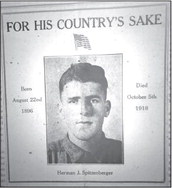Echoes of a past pandemic


1918 articles show parallels between Spanish flu, COVID-19
The word “unprecedented” is used a lot these days to describe the current s...


1918 articles show parallels between Spanish flu, COVID-19
The word “unprecedented” is used a lot these days to describe the current s...